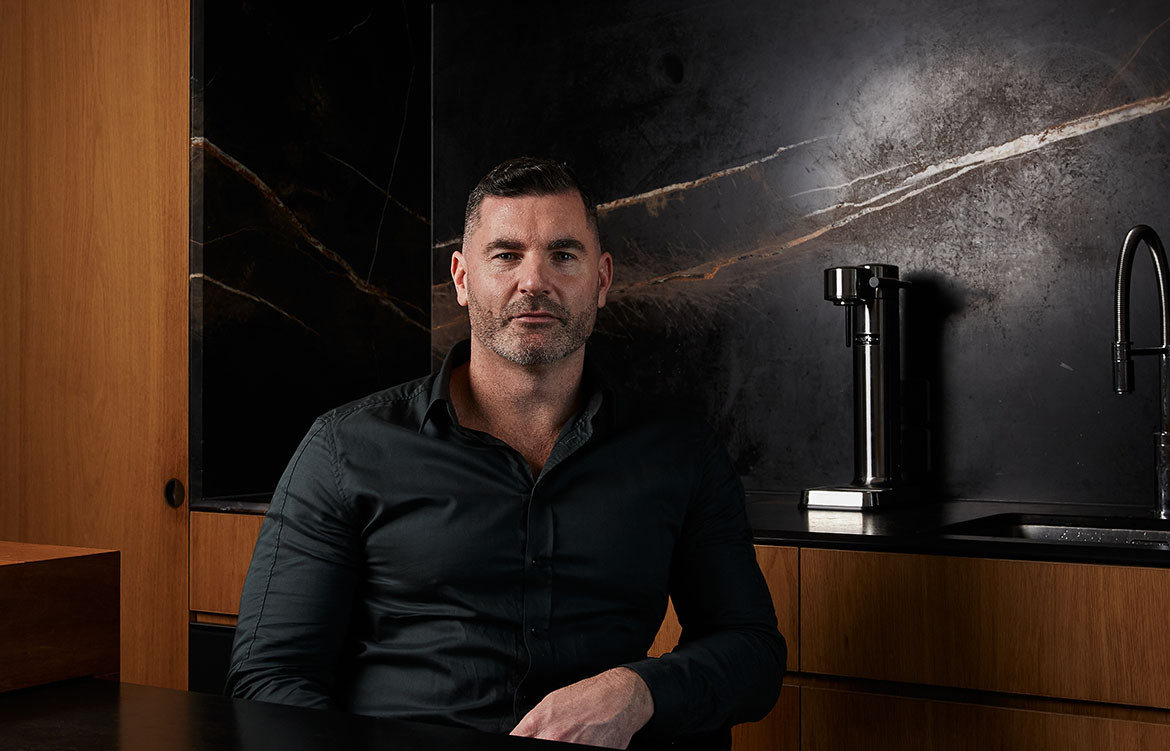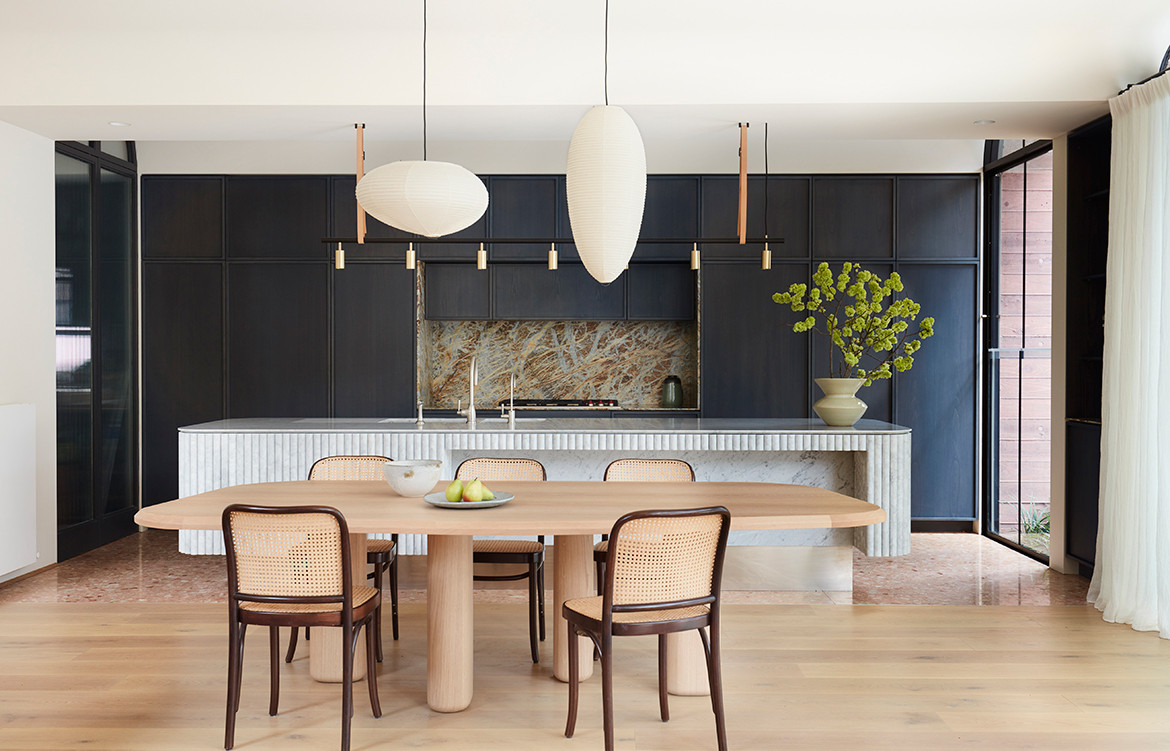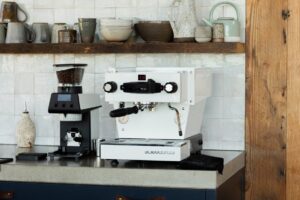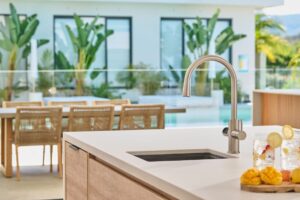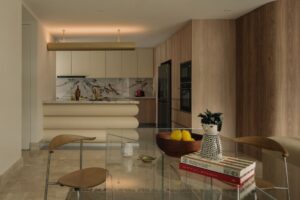Michael Drescher muses that, “A kitchen is not just a static thing.” As interior design director of DKO, Drescher has designed countless kitchens working across myriad projects, including private residences, and small- and large-scale apartments and townhouses. Given this experience, he’s at the forefront of shifting demands when it comes to creating a kitchen that is both practical and beautiful.

Habitus Townhomes by DKO, photo by Timothy Kaye
For Drescher, “The kitchen is becoming more of a design object”, as the veritable heart of the home, he sees the kitchen continuing to be a centre point, while also becoming a statement in itself. “One thing I see really evolving in Australian kitchens is how the island bench has become not just a beautiful object but also a social facilitator.”
“One of my favourite things to do is put people at the end of an island bench, all facing each other, creating an opportunity for connection,” he shares. It might not seem like much, but that subtle shift to a circular arrangement encourages interaction. “You want people to be able to be social in all parts of the home – living, dining and kitchen – and small tweaks can encourage it,” he says.
“The kitchen is becoming more of a design object.”
As a key element within the kitchen, Drescher pushes what an island bench can be, designing them as a natural yet distinct extension. For instance, he takes design cues from furniture and integrates it into the kitchen. “I often look at the characteristics of a dining table and break down the solidness of the island bench by having part of it with legs, adding in more detailing, and lifting or lowering the height.” It’s here where the notion of the kitchen as an object shines through.

Martha Cove by DKO, photo by Damien Kook
While they do require more space, this kind of statement island becomes an additional zone within the living area. Adding an extra surface in this way adds further flexibility, creating a space for kids to do homework while dinner is being prepared, or a spot for casual meals. It can even be utilised as a desk when working at home.
Even though the starting point for any kitchen always begins with the owners and how they live, Drescher points out that there are some fundamental considerations that will make a kitchen a place of joyful functionality. Regardless of size and scale, the fridge should be located at the edge of the kitchen, so anyone else can come and grab stuff without interrupting the flow if someone is cooking. Then it comes down to the arrangement of the three points – cooktop, sink and fridge – which should all be in a natural, comfortable placement with one another.

Habitus Townhomes by DKO, photo by Timothy Kaye
As a highly trafficked space in the home, Drescher always opts for high-quality materials like natural stones, timbers and veneers, aligning with the sentiment that “a beautiful kitchen wants to be touched”. These offer durability and can withstand the usual wear and tear that goes hand in hand in this space.
While the idea of the kitchen being a command centre for daily life will continue, through clever design it can also be a versatile hub that brings people together.
DKO
dko.com.au
This article originally appeared in issue #51 of Habitus magazine – the Kitchen & Bathroom special
Enjoyed this story? See this clever project in Collingwood by DKO


